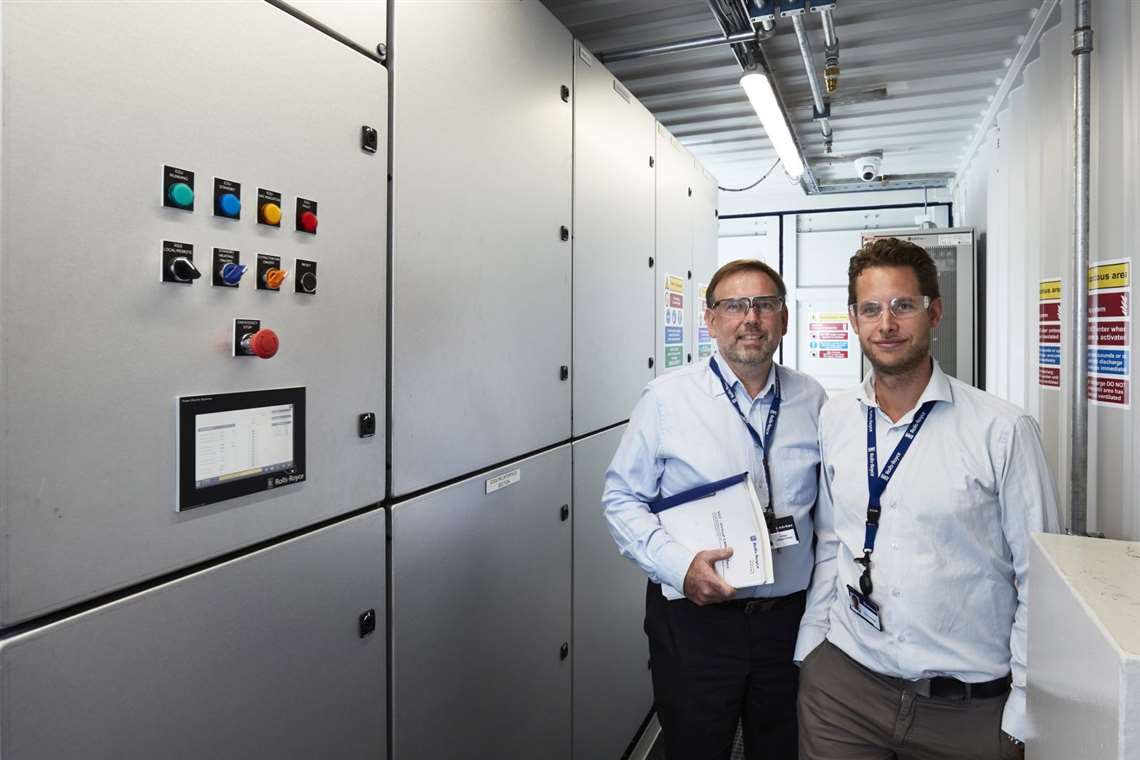Energy Storage At Sea
15 August 2018

Rolls-Royce is launching a lithium-ion based energy storage system for ships the company said will offer ship owners a clean, safe and cost-efficient complete system.
Energy storage is a major green investment for a ship owner. Returns are maximized when the system is correctly dimensioned for the specific ship and includes intelligent power control, the company said. Rolls-Royce have been delivering energy storage systems since 2010, however the actual energy storage units were previously supplied by an external party.
The SAVe Energy storage system is designed to be a cost competitive, highly efficient and liquid cooled battery system with a modular design that enables the product to scale according to energy and power requirements, the company said. SAVe Energy comply with international regulations for low and zero emission propulsion systems.
SAVe Energy is an energy storage unit (ESU), and was recently class approved by DNV GL, confirming that SAVe Energy has been developed in compliance with the newest 2018 ruleset, and are accepted for installation on all vessels classed by DNV GL.
The development work has been partly funded by the Norwegian Research Council of Norway’s ENERGIX program. The three ship owning companies Color Line, Norled and the Norwegian Coastal Administration Shipping Co. have been partners in the development, ensuring that the energy storage system covers a wide variety of marine applications, including ferries, cruise vessels and multi-purpose vessels.
SAVe Energy is be delivered from the Rolls-Royce Power Electric site in Bergen, Norway, as part of the company’s offering of complete ship systems.
“The electrification of ships is building momentum,” said Andreas Seth, Rolls-Royce, EVP Electrical, Automation and Control – Commercial Marine. “From 2010 we have delivered battery systems representing about 15 MWh in total. However now the potential deployment of our patent pending SAVe Energy in 2019 alone is 10-18 MWh.”
SAVe Energy can be applied to several areas including peak shaving, spinning reserve and battery powered vessels. Combined with a liquefied natural gas (LNG) or diesel powered engine in a hybrid solution, it will increase efficiency and reduce emissions, and can be coupled with most types of propulsion units, according to the company. In a hybrid set up, SAVe Energy handles the peak load, while the main power generators will relate to the average load and not reduce the propulsion units thrusting capabilities.
“Battery systems have become a key component of our power and propulsions systems, and SAVe Energy is being introduced on many of the projects we are currently working on,” Seth said. “This includes the upgrade programme for Hurtigruten’s cruise ferries, the advanced fishing vessel recently ordered by Prestfjord and the ongoing retrofits of offshore support vessels. As a system provider we can find the best solution considering both installation and operational cost.”
STAY CONNECTED




Receive the information you need when you need it through our world-leading magazines, newsletters and daily briefings.
POWER SOURCING GUIDE
The trusted reference and buyer’s guide for 83 years
The original “desktop search engine,” guiding nearly 10,000 users in more than 90 countries it is the primary reference for specifications and details on all the components that go into engine systems.
Visit Now
CONNECT WITH THE TEAM









